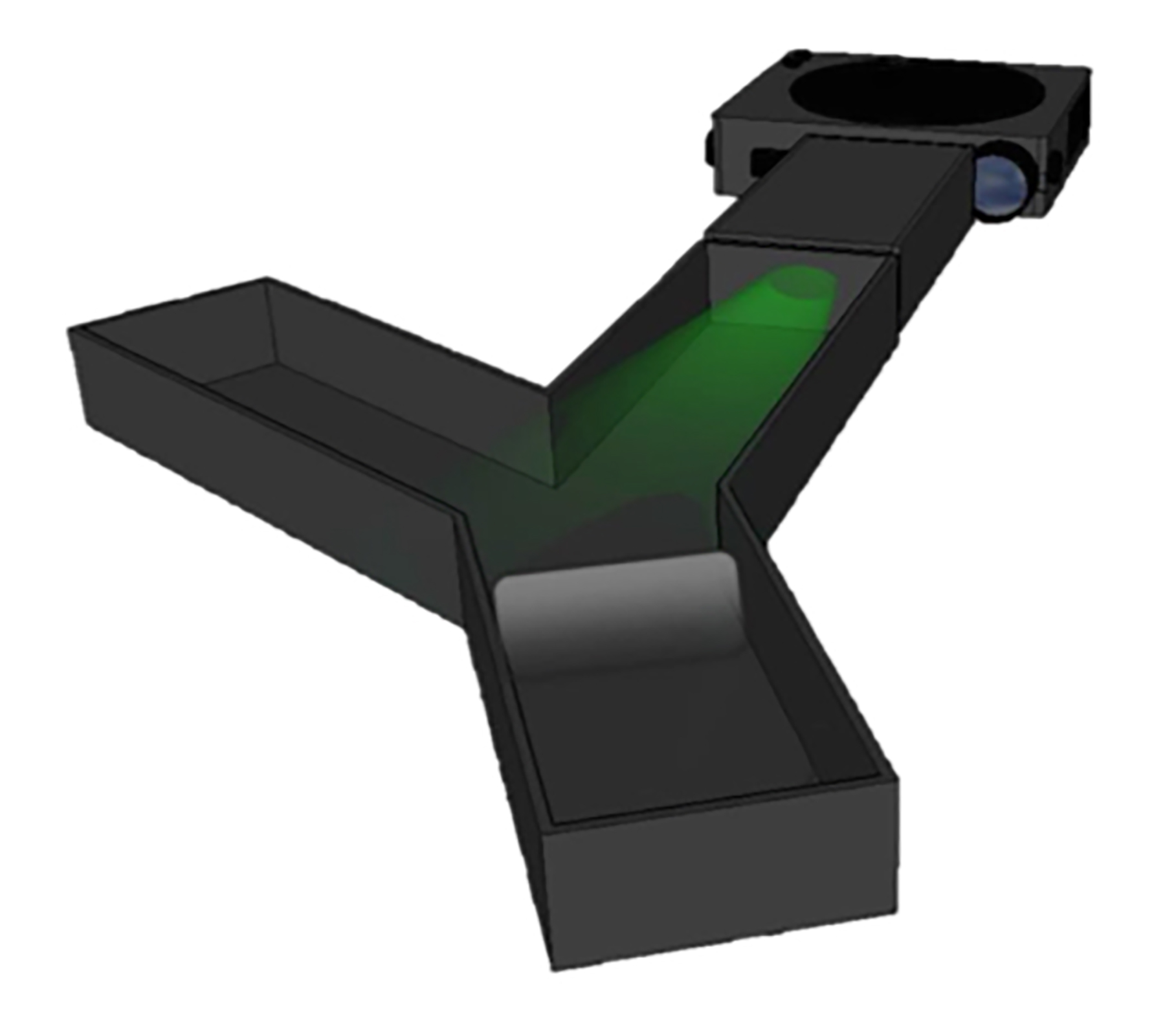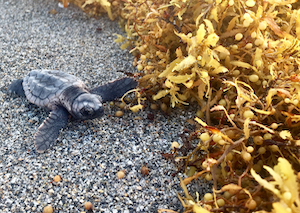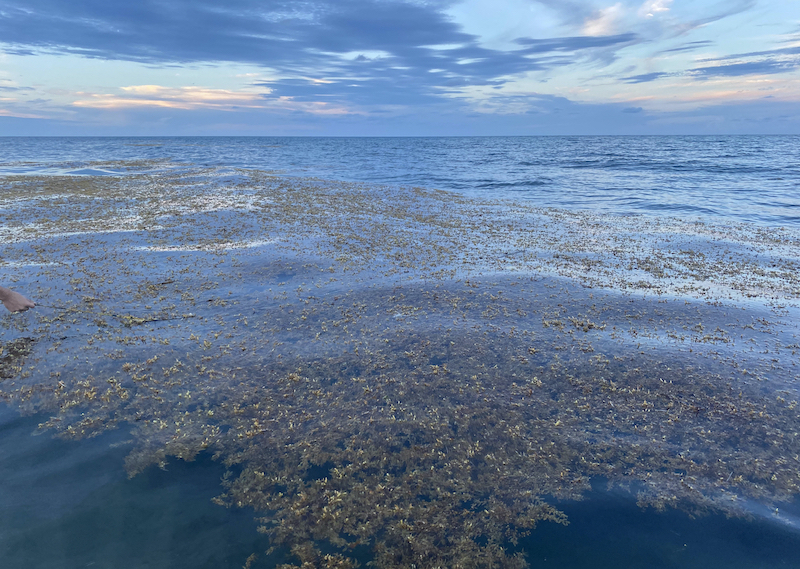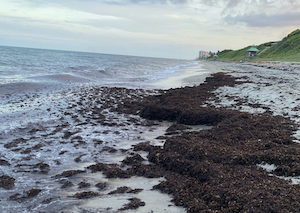
The amount of time it takes for a sea turtle egg to develop is mostly determined by temperature. With close to 100 eggs in a single nest, the eggs in the center tend to be warmer than those around them. Despite these temperature differences, sea turtles tend to hatch within a few hours of each other and dig out of the nest, emerging together.
How are embryos communicating with each other to hatch and work together to emerge from the sand? As one sea turtle begins to claw out of its egg, the surrounding embryos experience changes in movement, touch, and pressure through their flexible-shelled eggs. Studies suggest that these changes act as cues for the surrounding embryos to begin clawing out of their eggs as well. This hypothesis was supported by shorter incubation periods in nests with many viable embryos (lots of movement = more mechanical stimulation) and longer incubation periods when fewer embryos survived (less movement = less mechanical stimulation). Additionally, eggs laid later in the season hatched earlier when incubated next to older and more “active” eggs, further suggesting mechanical stimulation plays a role in synchronized emergence.
 Visual Perception
Visual PerceptionOnce out of the nest, hatchlings of all species begin a furious crawl to the ocean with incredible accuracy. Vision plays a large role in this process of “sea finding,” where hatchlings orient themselves towards the lowest and brightest horizon available, which should lead to the ocean and away from the dark, sloping dune. We know that if hatchlings cannot see, they cannot find the water. But what wavelengths of light are they using to find the water and what are their sensitivities?
Using a Y-maze, scientists demonstrated that loggerhead and green sea turtle hatchlings will crawl into an illuminated arm that is over 100 times dimmer than the beach environment during a new moon! They can see a very dim light. These dim lights that we may perceive as being green, blue, or violet have shorter wavelengths than red or orange lights.
The same increased sensitivity to shorter wavelengths is also true of leatherback sea turtle hatchlings, though overall, this species seems to be comparatively less sensitive to all wavelengths of light. Still, leatherback sea turtles can crawl in the direction of light even 10 times dimmer than the beach environment during a new moon. Thus, they too can see in dim light but need more light than loggerhead and green turtle hatchlings. Increased artificial lighting and skyglow from nearby cities can overpower the natural beach light cues and cause confusion for sea turtle hatchlings of all species.
Large mats of Sargassum floating out in the open ocean provide a variety of marine organisms, including sea turtles, with shelter and food. However, when large amounts of this algae wash up on our South Florida beaches, it may impact hatchlings’ ability to crawl to the water and take their first breath near the shore break. In recent years, we have seen a dramatic increase in Sargassum that has led to concern for the turtle hatchlings on our beaches.
Students in this lab investigated how the amount of Sargassum is changing over time, what aspects of the environment contribute to the amount of Sargassum on our beaches, and how the Sargassum affects hatchling sea finding and resurfacing behaviors. In controlled release experiments, the percent of hatchlings that we're able to navigate to the water decreased as Sargassum height increased. In particular, when elevation reached 30-39 cm (around 1 ft.), no hatchlings successfully found the water. Sargassum levels were only this high during one night of trials, but if Sargassum density continues to increase, this may be a more common occurrence. There are likely several factors influencing the elevation of Sargassum on our beaches, including wind direction and speed. This work will better inform conservation and beach management practices.

|

|

|